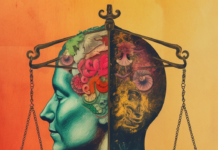In a new editorial published in the International Journal of Drug Policy, Magdalena Harris and Nicole Luongo introduce a special issue dedicated to exploring academics and researchers that have lived experience of illicit drug use.
The authors reject the addiction model so common in conversations around drug use, instead opting for a nuanced approach capable of recognizing the capacitating and sublime elements of illicit drug use as well as the struggles some people experience. In addition, they argue that knowledge around illegal drug use must include voices of people who use illicit drugs, voices that are often silenced due to the epistemic violence and stigma that accompanies drug use.
“We do not ascribe to a ‘disease model’ of ‘addiction’ –the latter term also rankles. With others, we work to reject narratives of ‘addiction’ as merely destabilizing, taking seriously the resurgence of pleasure as a scholarly topic of investigation in relation to using drugs of abjection (crack, heroin, methamphetamine, etc.),” they write.
“We know that normalizing discussion of the way in which drugs are intensely and pleasurably embodied, experienced as both capacitating and sublime, is a crucial move in subverting dominant pathologizing narratives. Yet, we are equally aware that for some (us included), drug use may have destabilizing features. It may not always be pleasurable.”
 Although addiction models of drug use are still prominent, many authors have presented alternative models more in line with the current work’s vision. One such example is Marc Lewis’ learning model of addiction. Leaning on his expertise as a neuroscientist and former drug user, Lewis asserts that the brain changes associated with drug “addiction” are not evidence of a diseased brain but rather reflect normal brain changes that accompany any habit formation. The solution Lewis sees for struggling with drug use is for the user to find an alternative narrative for their future, a process that can similarly rewire our brains.
Although addiction models of drug use are still prominent, many authors have presented alternative models more in line with the current work’s vision. One such example is Marc Lewis’ learning model of addiction. Leaning on his expertise as a neuroscientist and former drug user, Lewis asserts that the brain changes associated with drug “addiction” are not evidence of a diseased brain but rather reflect normal brain changes that accompany any habit formation. The solution Lewis sees for struggling with drug use is for the user to find an alternative narrative for their future, a process that can similarly rewire our brains.
Similarly, philosopher Hanna Pickard has written about a “responsibility without blame” model of problematic drug use. Rather than conceptualizing addiction as a diseased brain or a choice made by an individual, this model acknowledges agency in addiction without stigmatizing drug users. In this model, people struggling with drug use are encouraged to see themselves beyond the “addict” label, as people with agency, that can make different choices rather than envisioning their brains as hijacked by a substance. Therapeutic communities based on this model emphasize responsibility and agency in choosing to use drugs or not, with clinicians essentially helping people to make better choices.
In addition to questioning the addiction narrative of illicit drug use, the current work also explores the epistemic violence that can occur to illicit drug users. Epistemic violence occurs when a group’s voice is dismissed as unimportant or unreliable in the creation of knowledge. Epistemic violence is commonly wielded against marginalized communities, including people with psychiatric diagnoses, service users in clinical settings, and illicit drug users.
With more research pointing to the dangers of using prescription drugs and research into the medicinal use of illicit drugs, the question of healthy drug use has become more convoluted than ever. According to some authors, the distinction between illegal and medicinal drugs may be far more arbitrary than most believe.
The current work acknowledges the authors’ struggles with illicit drug use without relying on a diseased brain model of addiction. Rather than conceptualizing illicit drug users only in terms of addiction and struggle, the authors point to the pleasurable and sublime aspects of recreational drug use as well as the obligation “outed” academic drug users feel to present themselves as stable and reliable against the “addict” narrative.
While the work does not focus exclusively on the destabilizing nature of drug use, the authors recognize the difficulty many people face and invite the reader to think about the complexity of illicit drug use as a sometimes destabilizing force that can inspire professional curiosity and provide pleasurable experiences. In attempting to walk this line in an academic setting, the editors concede that they had to encourage the authors to submit articles towards more academic and perhaps less authentic voices.
The current work then explores “high functioning” illicit drug users. Carl Hart, a well-known academic, has openly disclosed his heroin use. In his closing address to the Harm Reduction International Conference in 2019, Hart enjoined his drug-using colleagues to out themselves to help fight the persecution of illicit drug users.
Similarly, contributors to the special issue, Zampini et al., argue that researchers and other people in positions of privilege that use illicit drugs should out themselves to dispel myths about who uses drugs and move away from stigmatized representations of drug users.
The authors then examine the epistemic violence that can occur when illicit drug users are dismissed as incapable of speaking for themselves and are often ignored when they attempt to do so. Frank, another contributor to the special issue, describes how his knowledge about his struggles with benzodiazepines was dismissed by a disbelieving doctor. The authors acknowledge that the epistemic violence experienced by researchers and academics is likely much more pronounced in less privileged populations.
The voices of people that use drugs are systematically excluded from academic knowledge generation. While illicit drug users are commonly used as subjects or participants in research around drug use, they are rarely, if ever, included in the research as researchers.
For example, the authors point to the Institutional Review Board (IRB) excluding many drug users from acting as researchers under the flag of ethics. The current work champions participatory research in which researchers, some of which are illicit drug users, conceptualize research and frame questions about drug use by speaking and working with drug-using populations.
By including the population of illicit drug users in the research as researchers, we can generate knowledge capable of undoing stigmatizing narratives and informed by the lived experience of the people with the most at stake.
****
Harris, M., & Luongo, N. (2021). “Nothing about us, without us”: Negotiating the personal and professional as activists and academics who use drugs. International Journal of Drug Policy, 98, 103533. https://doi.org/10.1016/j.drugpo.2021.103533 (Link)















“According to some authors, the distinction between illegal and medicinal drugs may be far more arbitrary than most believe.”
It’s quite easy actually: amphetamine is a super dangerous drug that will kill you, while anphetamine is a super safe med which is great for kids.
Clear as cupcakes.
Report comment
Are you trying to say that it is somehow arbitrary to say that amphetamine is safe when you get it from Big Pharma but not safe when you get it somewhere else? That’s CRAZY talk!
Don’t forget, Methamphetamine (under the name Desoxyn) is also sold as a “medication” for “ADHD.” So it’s also healthy only when Big Pharma is profiting from it.
Report comment
Sounds about right–the line between legal and illegal drugs *is* arbitrary (cocaine and opium used to be legal for example, while marijuana is mindlessly classified as Schedule One).
Also I like the concept of epistemic violence–it happens all the time.
(At some point psychotropic drugs as per Joanne Moncrieff should be seen as simply providing relief rather than fixing some underlying brain pathology.)
Every illegal drug is surrounded by hysteria–reefer madness, opium dens, crack babies, bad LSD trips, etc.; the current form exists vis-a-vis fentanyl (some members of law enforcement go into convulsions when they think they’ve touched it even though it can’t affect you at that level that way).
Report comment
Richard I just read that you are studying for a Phd in consciousness! How fantastic. Such an important topic. Did you see my Mr Penrose, Nobel Prize winner, link in another comment? That genius has studied consciousness for years and he says he does not know what it is. I like that you are studying something we know so little about, if anything. My ex partner studied “nothing” for his Phd. Try getting your academic thinking around the nature of nothingness. Extraordinary. So exciting.
I put my Mr Penrose link in because it concerns me that if people tell me my diagnosis does not exist they may be talking about my consciousness. My schizophrenia may be in whole or in part coming from my consciousness. Is conciousness reliant on a brain? That is something Mr Penrose himself cannot answer.
Do neurochemical disruptions affect consciousness? Perhaps they do, given how anaesthetizing the brain with its trillions of neurochemicals affects consciousness in patients. Is consciousness entwined with trillons of neurochemicals or is it in separate compartment within the brain? Again Mr Penrose has no idea. I have no truck with ECT. I think it is bad treatment, any electrical stimulus. So when I now mention electricity in the brain I am just meaning the gentle natural currents that form part of human biology. Is consciousness affected by the electrical pulses that throb across the brain as waves, like delta and beta and alpha waves? Do the waves affect neurochemicals also or just consciousness, if indeed they do?
If nobody knows what consciousness is then I doubt anyone can come up with definitive proof that my schizophrenia diagnosis is “wrong”.
But regardless of whether I have a diagnosis or not, I am not at all for pills. I sometimes think people like to imagine differently about me.
Report comment
The world seems to be sliding into an abyss. This causes everyone behave like herd animals in a stampede. All it takes to start a stampede is one thousand plodding walkers standing shoulder to shoulder and one of them falls down. Those nearby stoop to help the fallen or avoid falling over them. It causes a break in the “orderly” momentum of docile peaceful crowd shuffling. It causes a void where the nearby helpers topple over too. Behind them the next row bends over heap of fallen and causes and obstruction like a wall of bodies, pushing and shoving and panic kicks off as more people realize they need to escape death by dashing out of the crowd. It all sets off mass panic in the herd. Until the heard, by trying to save itself, utterly destroys the herd.
At some point in civilization a metaphor of one person fell over. That metaphor might be a heroic figure wounded, or a group that got wounded, maybe a group that pointed out stigma one way or another. They fell. This spread a ripple of fear throughout the herd. More and more collapsed into the void. Screaming started and caused mass panic in the civilization. Soon everyone was hurrying to save themselves from death. What they deemed death was just the pushing and shoving other people who also feared death. When enough people in a crowd fear death they BECOME DEATH.
They become death by regarding everyone who is frightened and pushing and shoving because they fear death as being EVIL. As soon as that occurs and as soon as people try to save themselves from death by crushing EVIL, they BECOME EVIL.
Something in the nature of trying to save themselves turns them into death. So in order not to detroy any innocent people in the crowd it is essential to not save yourself by doing ANYTHING but CALMING DOWN. Being still and serene in the violence and panic and fear all around you needs to occur. You stop being a ripple causer and start being an island of serene stability. You stop listening to anyone nearby who says you ought to fear this movement or that movement. You stop listening to those who call this movement evil or that movement evil. You stop listening to those who say hurry up and save save save, hurry hurry hurry, panic panic panic. You stop listening to those who scream do something do something do something. You stop listening to those who say the world is a disaster and everyone should muster here, or here, or there, or there. When someone is in a panic in a crowded place, your panic will make them worse distressed. Panic is the most contageous thing in humans. At this point in time changes are happening in the world, but they are AS NOTHING compared to the escalation of panic simmering up in each global citizen as a mass stampeding crowd hysteria. It is from one or two toppling people or groups and the way this has spread fear in the millions about the evil of certain death. This causes millions to look at other millions and conclude that they are the death that must be shoved and pushed even though they are persons unknown and far away on some distant horizon of the stampeding crowd. Suddenly someone you have never met and do not know seems really frightening to you, not because they are deliberately frightening but because they, like you, just want to save themselves and are, like you, caught up in an internet caused mass stampede towards an illusion of safety.
The real safety comes in seeing clearly what is going on in the atmosphere. A stampede is invariably more a phenomenon caused by atmosphere that bottlenecks in stadium. But once you discern a change in atmosphere you can avoid things such as believing your neighbour is evil. This is hard work and involves schooling yourself in being as calm and introspective and loving and forgiving and impartial as you can be, non judgemental. How do you get calm? You do so by accepting your feelings. Accept them fully. Accept you feel angry. Accept you feel fear. Accept you feel upset. Accepting inwardly all of your feelings produces such calm that you do not need to act out those feelings in crashing, thrashing, stampeding behaviour. When humans do not accept inwardly their feelings, just as children do, then humans become discontent and anxious and stressed. It is when in a state of stress that humans blot out their feelings with lots and lots and lots of thinking, rather than feeling, that crashing and thrashing and stampeding sets off. This overthinking and stress is a kind of paranoia about evil neighbours who might be death that generates combative and aggressive and loveless behaviour. Overthinking is a kind of narcotic that gives a sense you will deal with the problem of the whole world pushing and shoving if you think all day about what “they” are getting up to, what evil, what nastiness, even though you have never met them and they live far away. Your overthinking drug has it that “they” in the stampeding crowd are trying to stop you saving yourself. They seem the problem that is causing all the jeopardy when really all they are is just another you. Another scrappy little vulnerable frail sick frightened human who has no one any harm, much like the person who is standing behind you or beside you in a crowd is just a random different person with excitingly different non threatening ways they prefer to live.
The impulse to conceptualize some stranger as a “them” is coming to you as a wave travelling through the crowd. A wave of upsetting fear. The fear has NOTHING WHATSOEVER to do with that stranger or this stranger or the behind stranger or the next to you stranger. THEY do not cause your fear. They are merely a property of the same herd you are a property of. The herd is like a herd of gazelles peacefully grazing. There may be a lion and it may cause a gazelle to topple and create a void, but it is not the lion that sparks the mass stampede it is the huge mountainous rumble of the same herd that causes the stampede.
On the internet come drip feeds of unsettling lions and toppled gazelles. This does need collective attention to ensure everyone stays safe. However, that occasional unsettling news sets off like a bomb in the crowd and soon it is not the news that is causing the deaths but the people pushing and shoving and fighting to save themselves from other people trying to save themselves.
Today I wrote a comment elsewhere on the internet, a place I have tried to be a pillar of peace in, in that sector of global stampede. Sadly it is has fallen on deaf ears.
But all is not lost. Why do I say this when the whole world is teeming with people who fearful and desprate to save themselves and so are bickering at eachother from dawn to dusk?
It is because this is the way humanity is marching in order to find out that, just like the tank plagued bloody fields and trenches of Flanders, it is a shit way to go.
As soon as humanity finds out the importance of inner balance, through horribly losing it in a stampede and robbing every other “them” of their balance, then humanity will yearn to be calmly balanced again as individuals, a herd at peace, once again, unstirred.
Out of the mud of war will grow a flower of peace.
We seem to be heading to the jostling, spitting, shoving, pushing, name calling, hating, discriminating, bullying, chiding, lecturing, paranoid, overthinking route of salvation through all the grotesqueness of war in order to spot a muddy flower half trampled.
The whole thing disgusts me. The internet and its drip feed of poison and lies and hatred disgusts me.
Those who want to preseve what little balance they have left should leave the stirring internet and go off into the wilds and build beautiful loving isolated communities to shelter from the storm.
Report comment
Actually, in many ways, we do need to know if researchers are using legally prescribed psychiatric drugs. However, that would be illegal because of medical privacy laws. It would, I think, in this society be difficult to acquire a position in academia without at least trying marijuana as it has been very popular amongst those attempting to be educated. In the end, this article and the ideas in it are probably just a waste of time. We know that we have a drug culture. We know that using drugs is the answer of the day to all our little problems—physical, mental, even spiritual and moral. I believe someone stated how ECT is different from psych drugs in that ECT flows an obvious electrical current through the brain and body; but, how do we know that something similar is not happening when we take any of these mind-altering drugs, whether legally prescribed or illegal as determined by law. The only way out of this is for our culture to stop the drug madness. We need to realize that we do live in a drug culture and it is killing us. We need to keep the drugs that are illegal, illegal and even consider making many legal drugs illegal. We need to realize that these illegal drugs, such as psychadelic drugs are dangerous and do not offer any hope to anyone for any reason. We need to go back to illuminating how we can get high (or whatever we want to feel) without drugs or hurting or taking advantage of others. We have lost our moral compass. A nun I knew once in college suggested this to a person in “distress”, “Have you tried God?” That sure is a more healing and life-giving and affirming than any kind of drug, especially the mind-altering type drugs, which as opposed to some drugs (i. e. antibiotics) have absolutely no redeeming value at all. Thank you.
Report comment